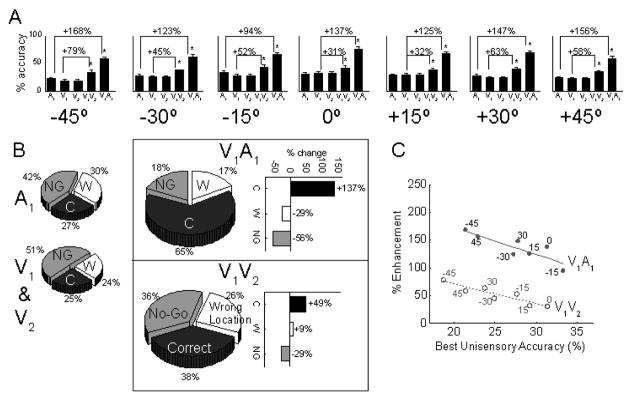Figure 4.
Comparisons between multisensory and unisensory integration in behavior. Animals were trained in a spatial localization task and their localization accuracy was tested with brief (50ms) visual and auditory stimuli. There were two potential visual targets (V1 and V2) at each location. They were presented either alone, individually with the auditory stimulus at the same location to assay multisensory integration, or together to assay unisensory integration. A: The mean accuracy of the animals in localizing the auditory (A1) stimulus, the visual stimuli at each location (V1 and V2), the visual stimuli when simultaneously presented (V1V2), and conditions where a visual stimulus was paired with the auditory stimulus (V1A1). While both multisensory and unisensory integration yielded enhancements, multisensory integration was far more efficacious. B: Responses are collapsed across locations and decomposed by type: correct responses (C), no-go responses (NG) where the animal did not move from the starting position, and wrong responses (W) where the animal oriented to the wrong location. While multisensory integration yields robust decreases in both types of errors, unisensory integration decreased only the numbers of NG errors. C: Multisensory and unisensory integration follow parallel but significantly trends of “inverse effectiveness.” Each point on this plot of % enhancement vs. the best unisensory accuracy represents a different test location. From Gingras et al., 2009. In Press.

